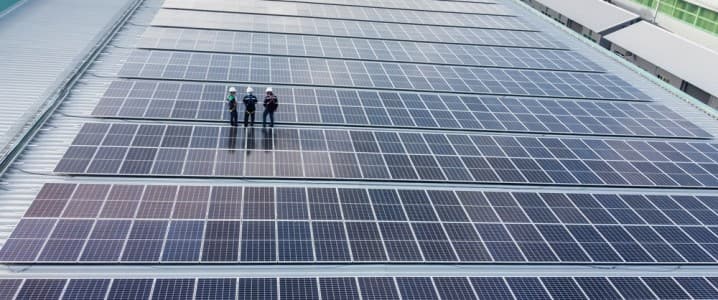Title: U.S. clean energy Manufacturing Sees Surge in Investments Since Introduction of Inflation Reduction Act
Paragraph 1:
Since the introduction of the Inflation Reduction Act (IRA) by U.S. President Biden in the summer of 2022, there has been a significant increase in investments in a wide range of clean energy projects. The IRA has set in motion a renewable energy boom that many other countries hope to replicate. One area that has seen accelerated development is clean energy manufacturing, with President Biden promoting national production of energy components to create jobs and reduce reliance on foreign powers for renewable energy capacity.
Paragraph 2:
By October 2022, the IRA had stimulated at least $28 billion in investments in green energy manufacturing. The reform was introduced to reduce national inflation and support the growth of the U.S. renewable energy industry. With nearly $400 billion in federal funding, the IRA provides favorable policies for companies looking to invest in clean energy and decarbonization projects, attracting the attention of investors.
Paragraph 3:
Initially, a large portion of the green manufacturing funding was allocated to the electric vehicle (EV), battery, and solar manufacturing sectors. However, as more companies seize the opportunities provided by public funding, subsidies, and tax breaks, a more diverse range of investments is expected. Credit Suisse estimates that the legislation could attract up to $1.7 trillion in new investment over the next decade, creating approximately 9 million new jobs and increasing the U.S. GDP by around 1 percent.
Paragraph 4:
President Biden’s Made in America strategy has also played a role in encouraging new green manufacturing activities. The government-wide initiative, launched through Executive Order 14005, strengthens the use of federal procurement to support American manufacturing. This initiative has led to operational expansion plans by almost all U.S. automakers in the EV manufacturing sector. The IRA extends the federal EV tax credit for a decade and eliminates the manufacturer cap of 200,000 vehicles, providing stability and incentive for consumers.
Paragraph 5:
Foreign EV manufacturers, such as Kia from South Korea, have also shown interest in the U.S. market since the introduction of the IRA. Moving manufacturing operations to the U.S. allows foreign companies to qualify for IRA incentives that they wouldn’t otherwise be eligible for.
Paragraph 6:
Another area experiencing a surge in interest is battery manufacturing. Ford has begun constructing a multibillion-dollar advanced manufacturing complex for lithium-ion batteries in Tennessee, while GM and South Korean battery maker LG Energy Solution Ltd. secured a $2.5 billion loan from the U.S. Department of Energy for their Ultium Cells LLC venture. The U.S. battery manufacturing market is expected to grow significantly, with a projected 14 percent share of global battery cell production capacity by 2025.
Paragraph 7:
Renewable energy component manufacturing has also gained greater interest. First Solar, the largest U.S. solar panel producer, plans to build its fifth U.S. factory, supported by IRA incentives. The company has already invested billions of dollars in increasing production capacity to meet the soaring demand for solar panels.
Paragraph 8:
Political initiatives like Made in America and the IRA have attracted public and private investment in the clean energy manufacturing sector, with more expected in the coming years. These investments make the U.S. highly competitive in EVs, lithium-ion batteries, and green energy components, ensuring a resilient supply chain for future projects and enhancing energy security.
In conclusion, the introduction of the Inflation Reduction Act has sparked a surge in investments in clean energy manufacturing in the United States. The IRA, along with other policies like Made in America, has attracted billions of dollars in funding and stimulated job creation. With a diverse range of investments in electric vehicles, batteries, and renewable energy components, the U.S. is positioning itself as a global leader in clean energy manufacturing.
Original Story at oilprice.com – 2023-08-10 15:00:00


Comments are closed.